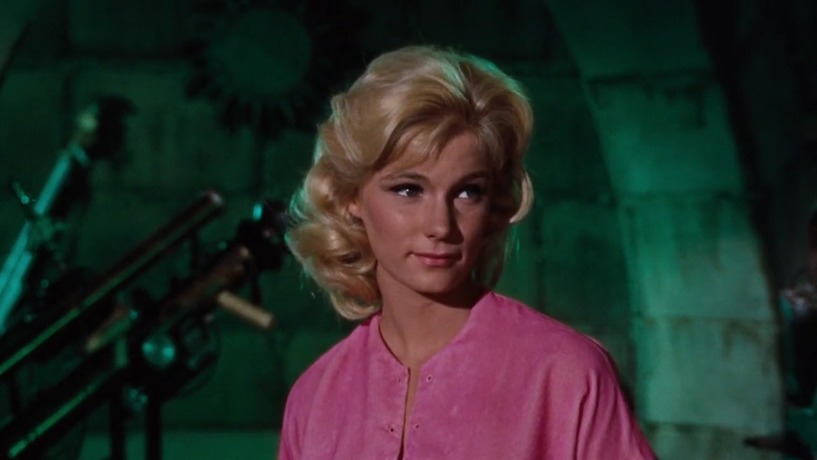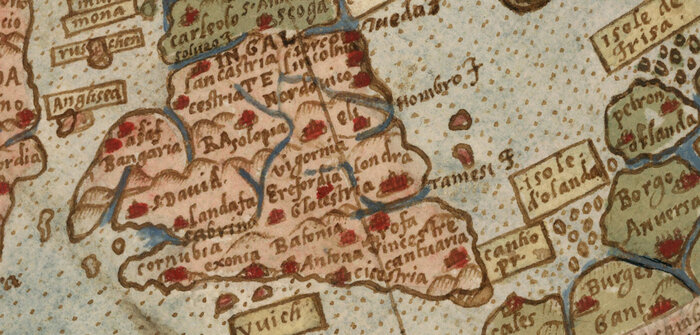HG Wells' novel The Time Machine describes post-catastrophe humans being reared as cattle. It was based on real events in a real place. Sat 11 September 2021
The Eloi: children of England's manorial farm system. Source: The Time Machine
In The Time Machine, HG Wells described a devastated England without adults, where children were raised as cattle. The children were the 'Eloi', and their farmers the 'Morlocks'.
Eloi were bred like cattle; then taken underground. Source: The Time Machine, 1960
But perhapsThe Time Machine - like George Orwell's Animal Farm - was based on on real people experiencing real events in a real place:

Sheela na gig from St Mary's church, Easthorpe, Essex. Source: Images of Lust, 1999, p9
Describing this sheela na gig stone carving, Images of Lust co-author Anthony Weir wrote:
The word 'ELUI' defies explanation.
However, paraphrasing The Sheela Na Gig Project on the Easthorpe sheela na gig:
'elui' is from the latin verb 'eluo': to dispose of, remove, clear, or to wash away
What might this mean?
Well, it might mean disposal of dead bodies. Carcass recycling. See Location Analysis: Peterborough-Stamford Wild Hunt Part Four.
But it may also refer to a real place that was washed away.
Fifty miles north-west of Easthorpe, and its sheela na gig, was 'Elloe'. 1

Elloe, Lincolnshire, UK. Source
It looks as though it used to be a city:
Excerpt from Monte Urbano map. 1587. Source: Tavola 1-60. (Map of the World)
The river labelled Hombro f flowing between Ele and Lincoln no longer exists - though its name was apparently given to the modern Humber. Seemingly it's the same river glaciologists claim once flowed east through the Ancaster Gap then past Wainfleet All Saints.
That these mysterious changes go unrecognised might be accounted for by former Durham University geography professor Ian G Simmons:
From Introduction:
an admission of sketchy information for some parts of the story is necessary from the start. Nowhere is this more so than for the town of Wainfleet All Saints itself. Documentary evidence for its site, situation and function has mostly to be inferred from accounts of other places
the town and its organization is virtually absent from the documentary record.
the town as we now see it forms something of a Wainfleet-shaped hole in the documents. Somehow, the relevant archive of a key manorial owner or owners (the Kime family, the Earls of Lincoln, the Duchy of Lancaster and Bardney Abbey are all possible candidates) has disappeared off the scene rather than into the store-rooms of the British Library, the National Archive or the Lincolnshire Archives. If any reader knows better then we need to hear about it, even though the news will be likely greeted with some annoyance.
But Elloe still exists and still follows almost identical administrative boundaries as the wapentake, though probably not the original port of Ele. Today, Elloe is called 'South Holland'.

South Holland, Lincolnshire, UK. Source
Elloe was also removed, cleared, washed away. Conventionally, it was flooded about the same time the Romans left Britain:
The Roman Empire falls, the Fens flood... Source: BBC Talking Landscapes: The Fens
But probably not in that order. Because in the absence of documentation, historians are guessing.
Sea levels rose along England's east coast, not just in the Fens.
From Maldon at the close of the Middle Ages:
the local settlement... relocated from the Roman site, which had succumbed to the spread of marshland
More evidence of a destructive event centred on South Holland is examined in:
- On the Level About Lincolnshire - Part One - Circular Arguments
- On the Level About Lincolnshire - Part Two - Sunken Churches
- On the Level About Lincolnshire - Part Three - Depopulation and Repopulation
- On the Level About Lincolnshire - Part Four - Resemblances to Tunguska
What else links Elloe with post-flood famine? The stone at its centre.
From Itinerarium Curiosum, Rev William Stukeley, 1776 edition, p24:
Between these two parishes (Whaplode and Moulton), in a green lane northwards, stands a little stone called Elho stone 2, whence the name of this hundred is derived: it is about the middle thereof, and was formerly the main road across the country, now called Old Spalding Gate. Old men tell us, here was kept in ancient times an annual court; I suppose a convention, sub dio, of the adjacent parts, to treat of their general affairs.
What Stukeley means is that the Elho Stone was a bluestone. An execution and butchery stone used to process the losing party in court disputes. What we would call a 'court'. Although in those days, Elho Stone was probably called 'Elho quoit' rather than 'Elho court'.
Another coincidence is that 20 miles south-east of Elloe is the Fens cathedral city of Ely.
Flat and featureless South Holland epitomises eastern England's peculiar landscape and history:
- Huge buried trees called 'bog oaks'.
- Fields full of human bones.
And evidence of a historical cover-up:
- Missing historical documents.
- Spalding's oddly well-funded historical society.
- Poorly explained geology.
- Poorly explained ruined buildings.
- A still-standing "Prior's Oven". Meaning of "Prior's Oven".
And a proud focus on butchery:
-
South Holland's "thriving butchers scene".
-
Exemplified by Lincolnshire pork sausages:
South Holland's central town - Spalding - was home to one of The Fens' many now-vanished bone mills. Just a few miles away - a few miles north of Ely - is Narborough's 'enigmatic' human bone processing mill:

Location of Narborough Bone Mill. Source
From The Origins and Development of the British Coprolite Industry, Bernard O'Connor and TD Ford in The Bulletin of the Peak District Mines Historical Society, Vol 14, No. 5, summer 2001:
There were reports of cargoes of mummified cats from Egyptian pyramids and sun-bleached bones from the North African desert and the Argentinean pampas. The battlefields of Leipzig, Waterloo and the Crimea were scoured for their bones and even catacombs in Sicily were emptied.
"Great Britain is like a ghoul, searching the continents for bones to feed its agriculture ... robbing all other countries of the condition of her fertility" (quote from 100 Years of Fertiliser Manufacture, WS Keatley, 1976, Fertiliser Manufacturers Association).
You might also want to ask yourself why so many bones were available in north Africa and Argentina by the mid-19th century.
Another purportedly fictional world without adults is Cittàgazze in Phillip Pullman's His Dark Materials:
The city is plagued by ghostly beings called Spectres... the city is entirely devoid of adults, and populated only by small gangs of children. Spectres cluster around children approaching adolescence and consume them as soon as they come of age. Source
-
Perhaps that's how cities look when you live on a farm and the older stock continually disappear.
-
Perhaps that's how cities look when a so-called Civil War kills off the farmers, leaving only their former cattle.
Humans as cattle; church infrastructure as cargo cult. Source: The Time Machine, 1960
Are religious rituals actually cargo cult remnants of slaughterhouse rituals? Rituals used to calm sentient prey before slaughter?
Slaughterhouse religious ritual. Source: Cloud Atlas, 2012
Locations of evidence discussed in this piece.
© All rights reserved. The original author retains ownership and rights.
-
And Heritage-Explorer ↩
More of this investigation:
The Reformation was a Reformatting
More by tag:
#Manimal Farm, #human bone, #sheela na gig, #medieval retail, #human meat

